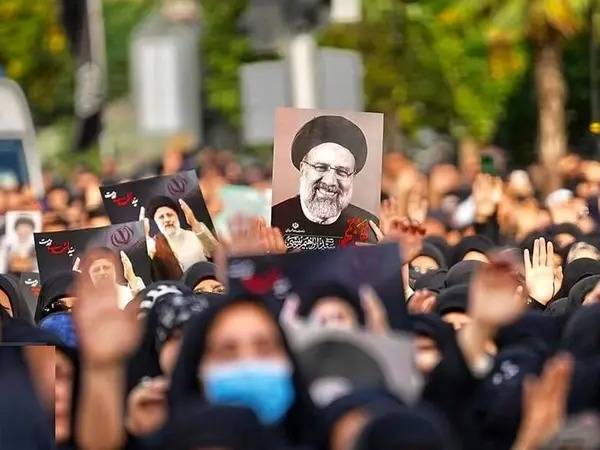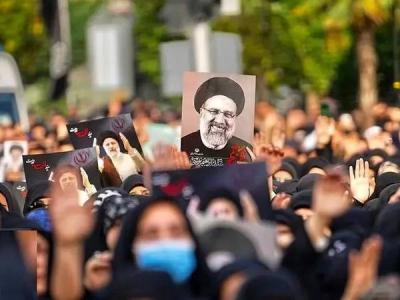Iran gathered several foreign figures and mobilized Iranians in the streets of major cities for the funeral of President Ebrahim Raisi, attempting to show that the unpopular regime affected by sanctions still has supporters. The Wall Street Journal reports that Iranian state media broadcast footage of what appeared to be hundreds of thousands of people mourning Raisi, who died at the age of 63 in a helicopter crash in a mountainous area on Sunday. Officials from around 50 countries attended, according to Iranian state media. The Emir of Qatar and the foreign ministers of Saudi Arabia, Kuwait, and the UAE were present, along with the Presidents of Tunisia and Tajikistan and the Prime Ministers of Iraq, Pakistan, Armenia, Azerbaijan, and Syria.
Anisa Tabrizi, an Iranian affairs expert at the Abu Dhabi-based Control Risks consultancy, states that the Iranian leadership is trying to show that it is not isolated and that Raisi and the regime itself have legitimacy both domestically and internationally. Many Iranians stayed at home away from the processions in the streets, with some even celebrating the president's death by sharing videos of fireworks, according to the newspaper.
Iran's relations with the West and some U.S. allies in the region have become increasingly hostile, and Western officials were absent. While the U.S. State Department expressed its official condolences for Raisi, the British Security Minister stated he refused to mourn the late president due to what he described as Tehran's role in killing thousands of Iranians domestically, as well as targeting people in the UK and across Europe. Tabrizi indicated that Iranian leaders were likely unbothered by the absence of Western presence.
Raisi led Iran away from diplomacy with the West and instead worked to strengthen partnerships with Russia, China, and countries in Central Asia and the Persian Gulf. The official funeral provided the Iranian leadership with an opportunity to attempt to display national unity at a time when support for clerical rule appears to be at its lowest, and Iran is still suffering from mass anti-government protests in 2022, which represented the gravest challenge to the leadership in Tehran in over a decade.
Tabrizi added that the funeral processions were the first large public gatherings since the 2022 protests, known for the slogan "Women, Life, Freedom." This was an opportunity for the Iranian leadership to rally its support base, providing a sense of unity and reclaiming the streets of the country, at least for a few days, after they had essentially become symbols of protest and resistance against the state. State-affiliated media aired interviews with Iranians and footage of Iranian Jewish rabbis attending the funeral. Tabrizi views the funeral procession as producing "exactly the kind of imagery of popular support that the Iranian regime wants the world to see since the 'Women, Life, Freedom' protests."
Raisi, aged 63, died on Sunday alongside Foreign Minister Hossein Amir-Abdollahian and six others when their helicopter crashed in a mountainous region in the northwest of the country while returning from the inauguration of a dam near the border with Azerbaijan.




